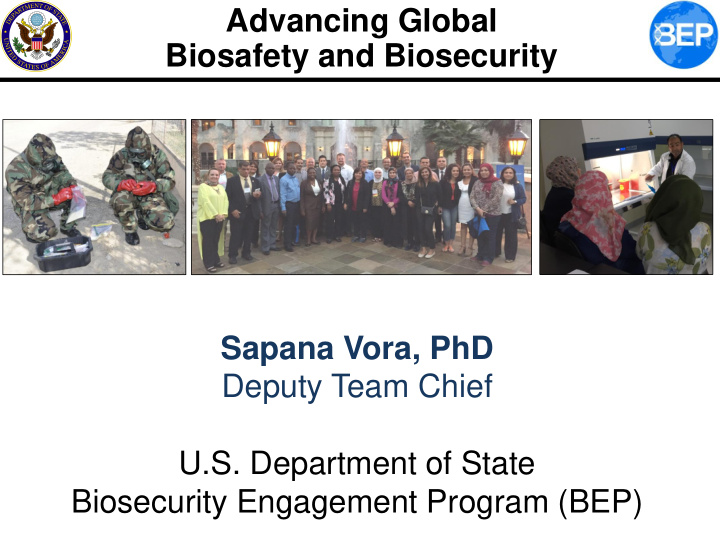



Advancing Global Biosafety and Biosecurity Sapana Vora, PhD Deputy Team Chief U.S. Department of State Biosecurity Engagement Program (BEP)
Dangerous Diseases are Global Healthmap.org, Subset of Category A and B Agents 2017
BEP Activities Three Pillars of Biosecurity Engagement Disease Biosafety/ Multisectoral Detection Biosecurity Engagement and Control Sustainable Capacity • Train-the-trainer • Best practices in • Early detection of programs biosafety and especially dangerous biosecurity pathogens • One Health efforts • Facility risk • Secure pathogen • Targeted biorisk assessments and collection and mitigation investments pathogen surveys diagnostics
BEP’s Capacity -Building Strategy • Understand the biosafety/biosecurity landscape – Identify gaps and opportunities – Visit facilities and meet with partners – Listen to technical experts and leadership • Collaborate on project development – Tailored to fit the partners’ needs – Right implementer for the right project – Adaptable and sustainable • Learn from implementing the project – What did we accomplish? – How can we improve in the future?
Lessons Learned • Landscapes evolve, sometimes quickly – Responding to crisis situations – Travel restrictions or challenges – Personnel turnover at home and abroad • Priorities shift, and so must we – One-year projects are often difficult – Threat-driven program • Projects will fail…and that’s expected – Know when it is time to let go and move on – Learn from the past to inform the future
STRONG PARTNERSHIPS, STRONG PROGRAM
Recommend
More recommend